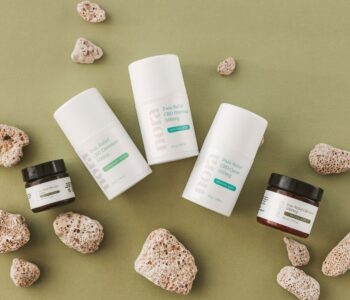 Healthcare
Healthcare
Basic Facts about Using Medical Cannabis
Medical Cannabis is a medical remedy derived from a type of Cannabis plant used to treat a specific disease or symptom. Although marijuana, which describes the unprocessed substance extracted from the plant’s leaves and flowers, is sometimes used interchangeably with Cannabis, the phrase relates solely to the plant genus.
Despite its extensive history of usage for medical purposes as an analgesic (pain reliever) and antispasmodic, scientists and doctors were primarily unaware of its therapeutic potential throughout much of the modern era.
Tetrahydrocannabinol (THC), cannabis’ active component, was discovered in the 1960s and found in a system of endogenous cannabinoid receptors and ligands in the late 1980s and early 1990s. These discoveries encouraged research into the therapeutic potential of Cannabis and its extracts and derivatives. In biology, ligands are chemicals that bind to receptors; endogenous compounds are those created by the body. This research has shown that Cannabis can treat specific illnesses, such as severe chronic pain, and it sparked the creation of several medical medicinal cannabis products.
Medical cannabis in medicine
Today, various standardized and refined medications from Cannabis are produced for medical purposes. The high amount of controversy surrounding the use of medical Cannabis in medicine is due in part to the continuing legalization debate and the absence of product standardization that would ensure safe and consistent dosing. While there is disagreement over legalization in the United States, for instance, the cultivation, possession, and use of medical Cannabis as medicine remain very contentious. This is partly because there isn’t any product standardization to guarantee reliable and safe dosing. While it is unlawful to cultivate, possess, or use Cannabis in the United States, specific states have passed legislation that authorizes the use of medical Cannabis. You can read more about Benefits of Taking CBD Oil During the Day by visiting http://xraygadgets.com/benefits-of-taking-cbd-oil-during-the-day%ef%bf%bc/

Cannabidiol (CBD), an active component of Cannabis, and several synthetic cannabis-like medications, particularly nabilone and dronabinol, are examples of products that have received FDA approval. In certain European nations, the use of medical Cannabis is lawful, while it is prohibited in the UK.
Pharmaceutical businesses and Researchers persisted in their study and development of medical cannabis products despite the legal challenges. For instance, the Medical Marihuana Access Regulations (MMAR) of Health Canada, passed in 2001, allowed for the development of the standardized cannabis product known as CanniMed for medical use in Canada. The cannabis plants used to make CanniMed are produced under strict control, and the THC content of the medicine is standardized at around 12.5%. The Netherlands has adopted a similar strategy and offers a variety of medical cannabis products, including Bedrobinol (12 percent THC) and Bedrocan (19% THC).
Use of Medical Cannabis
There is no intrinsic distinction between medical Cannabis used recreationally and that used medicinally outside of Canada and the Netherlands. Due to this, the best way to know medical marijuana is to utilize it under constant medical checkups and with a confirmed diagnosis of the target symptom-disease complex. Furthermore, to achieve predetermined therapy results, People use Medical Cannabis in concert with or consideration of other pharmacological and non-pharmacological techniques. Cannabis may help treat some illnesses, including pain, stiffness, nausea, anorexia, and seizures, according to anecdotal reports and the findings of randomized research trials. (Participants in randomized clinical trials are assigned by
Cannabis that is consumed without adult supervision is not regarded as medical marijuana. The same is true for medical marijuana that has been approved by a doctor who has not adequately assessed the patient, who has not prescribed the marijuana as part of a larger care plan, or who has not kept track of the patient’s subjective and objective results or adverse events. According to studies conducted in the first decade of the twenty-first century, cannabis use among people who self-report having a variety of diseases ranged from 30 to 50% (HIV/AIDS) to 10%. (epilepsy and multiple sclerosis).
Effectiveness of Medical Cannabis
The most common ways to consume medical Cannabis are through smoking, vaping, or eating prepared foods. However, none of these methods have been standardized, and clinical trials have not been conducted to assess the efficacy of edible cannabis products.
There are ways to use Medical Marijuana: orally (typically in the shape of cookies or candies), smoked, vaporized (heated until the active components are released but do not produce smoke), or taken as a liquid extract.
A few randomized controlled studies have been examined, including people with neuropathic pain disorders smoking Cannabis. Patients in every trial reported less severe pain at THC doses of 3.9 percent or above. As a control, an amount of Cannabis containing no THC was administered; all cannabinoids were taken out using alcohol to make this formulation. Drowsiness, dizziness, and dry mouth were among these investigations’ mild to moderate adverse effects. There were no documented severe adverse effects.
Medical precautions of Cannabis
A significant safety worry is a likelihood that medical cannabis usage can encourage or lead to recreational use, which can lead to adverse effects ranging from acute to chronic. Acute side effects in susceptible people include drunkenness, diminished motor and cognitive performance, increased heart rate, anxiety, and psychosis. Chronic symptoms include bronchitis (from smoking cannabis), psychological cannabis dependence, lack of desire, and mental deficiencies. Most of these effects appear to vanish with abstinence.
Risks and Limits
Unlike FDA-approved medications, medical marijuana is not closely regulated. When utilizing it, you are unaware of its potency, purity, or risk of causing cancer.
Only those with a doctor’s recommendation card should consume medical marijuana. A doctor will not give anyone under the age of 18 medical marijuana. Other people who shouldn’t use it include those who have heart problems, are pregnant, and have experienced psychosis in the past.